backlog produktu jest uporządkowaną listą wszystkiego, co jest znane i potrzebne w produkcie. Jest to jedno źródło zapotrzebowania na wszelkie zmiany w produkcie.
Właściciel produktu jest odpowiedzialny za backlog produktu, w tym jego zawartość, dostępność i kolejność.
Lista backlogu produktu nigdy nie będzie ukończona. Zmiany w potrzebach biznesowych, warunkach rynkowych lub technologii mogą prowadzić do zmian w liście zadań do wykonania produktu. Ewoluuje wraz z rozwojem produktów i zmianami w otoczeniu projektu. Wymagania projektu nigdy nie przestają się zmieniać, więc lista zadań do wykonania produktu jest jak stale ewoluujący artefakt scrumowy.
Elementy o wysokim priorytecie w backlogu produktu są szczegółowe. Ponieważ te projekty mają więcej informacji i szczegółów, a tym samym mają dokładniejsze oszacowania.
Projekty o niższym priorytecie są większe i mają mniej jasne szczegóły. W miarę jak zespół uzyskuje bardziej szczegółowe informacje o projektach o niskim priorytecie, będą one dalej dzielone na mniejsze. Zespół deweloperski jest odpowiedzialny za ocenę tych elementów w backlogu produktu od czasu do czasu.
DEEP w zarządzaniu backlogiem produktu
Backlog produktu zawiera wszystkie funkcje, funkcjonalności, wymagania, ulepszenia i poprawki wymagane do wydania produktu. Projekty backlogu produktu mają atrybuty opisu (odpowiednio Detalizowany), punkty historii (Estymacje), oraz zamówienia (Priorytetyzowane). Muszą być ciągle dodawane, usuwane i aktualizowane (Emergent) w backlogu i odzwierciedlać zrozumienie backlogu zespołu w odpowiednim i terminowym sposób.
Roman Pichler jest autorem Agile Product Management with Scrum, wspomnianym:
„Tworzenie produktów, które klienci kochają. Używamy czteroliterowego skrótu DEEP, aby opisać cechy dobrego backlogu produktu.” jest to opisowy skrót dla jakości backlogu produktu w Scrum, który oznacza:Detalizowany odpowiednio,Emergent,Estymowany iPriorytetyzowany.
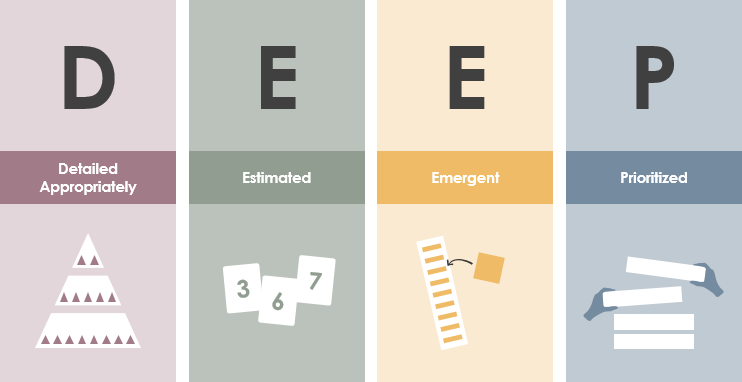
Szczegółowo odpowiednio
Historie blisko szczytu backlogu produktu będą realizowane w następnymsprint, więc te elementy muszą być wystarczająco dobrze zdefiniowane, aby zespół mógł nad nimi pracować bardziej produktywnie. Zazwyczaj historie blisko szczytu backlogu są mniejsze i bardziej szczegółowe, ale stają się coraz większe i mniej specyficzne w dalszej części listy backlogu produktu, jak pokazano na poniższym rysunku:
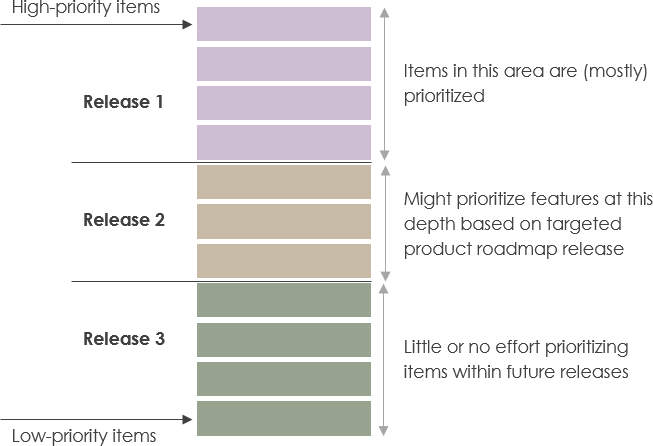
Oszacowane
Elementy w backlogu produktu są oszacowane. Elementy na szczycie backlogu mają dokładniejsze oszacowania. Elementy o niższym priorytecie są oszacowane na wysokim poziomie i mogą być ponownie oszacowane, gdy zespół uzyska więcej informacji.
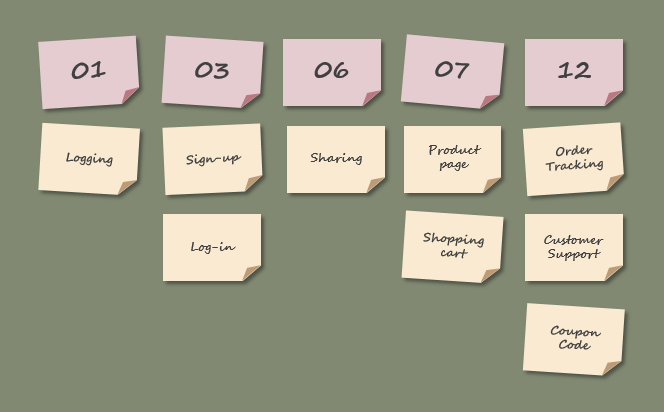
Ewolucyjny
Backlog produktu nie jest statyczny, jest w ciągłej zmianie. W miarę postępu projektu uzyskuje się coraz więcej informacji i wiedzy, a historie użytkowników w backlogu produktu są również dodawane, usuwane lub reorganizowane.
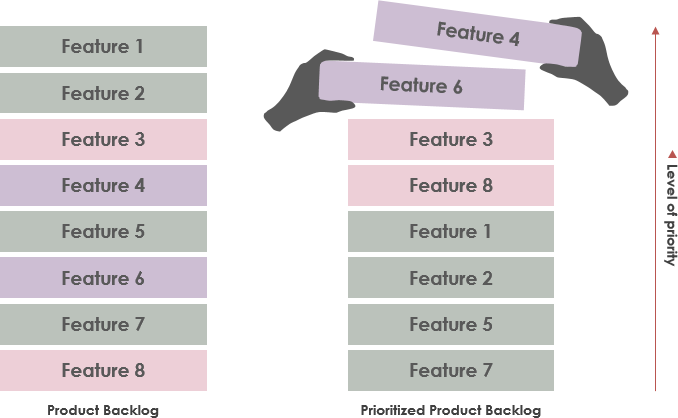
Priorytetyzowany
W backlogu produktu, im bardziej wartościowy, tym wyższy priorytet wpisu, powyżej, tym niższa wartość wpisów w backlogu produktu, tym niższy priorytet, następujący w backlogu produktu. Zespoły zawsze kończą wpisy o wysokim priorytecie, aby zapewnić maksymalizację wartości rozwijanego produktu lub systemu.
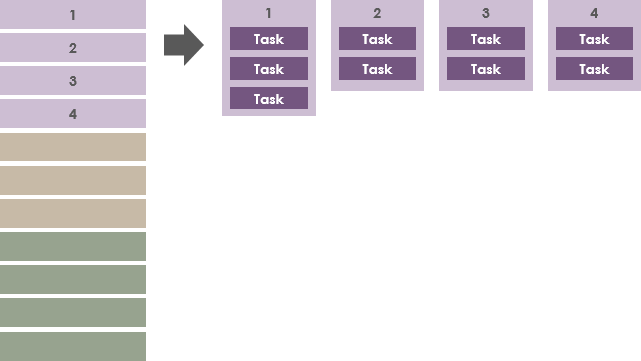
Podsumowanie
DEEP to użyteczna koncepcja do zastosowania wudoskonalaniu backlogu produktuprocesie, który obejmuje dodawanie szczegółów, oszacowań i kolejności do elementów w backlogu produktu i utrzymywanie go w dobrej formie.
Podczas udoskonalania backlogu produktu, elementy są przeglądane i poprawiane. Zespół Scrum decyduje, jak i kiedy dokonuje się udoskonalenia. Udoskonalenie zazwyczaj nie zajmuje więcej niż 10% pojemności zespołu deweloperskiego. Jednak elementy backlogu produktu mogą być aktualizowane w dowolnym momencie przez właściciela produktu lub według jego uznania.
Referencje
- Czym jest backlog produktu w Scrum? Kto jest za niego odpowiedzialny?
- Jak udoskonalić backlog produktu?
- Czym jest backlog sprintu w Scrum?
- Jak priorytetyzować backlog produktu za pomocą metody MoSCoW
- Jak priorytetyzować backlog produktu za pomocą metody 100 punktów?
- Czym jest cel sprintu w Scrum?
- Czym jest wykres burndown w Scrumie?
- Czym jest szablon Rola-Cecha-Powód?
- Przyrost sprintu vs potencjalny produkt do wysyłki vs MVP vs MMP
- Pisanie celów SMART i INVEST dla historii użytkowników
- Temat vs Epik vs Historia użytkownika vs Zadanie
- Czym jest DEEP w backlogu produktu?
Ten post dostępny jest również w Deutsch, English, Español, فارسی, Français, Bahasa Indonesia, 日本語, Portuguese, Ру́сский, Việt Nam, 简体中文 and 繁體中文













